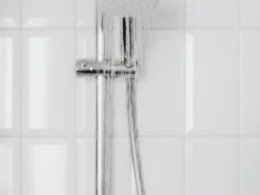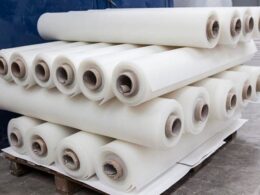The elegance and grace of watercolor paintings have inspired admiration for generations. Watercolor has special qualities that allow for dreamlike effects that are difficult to produce with other media. Not only does this method result in stunning artwork, but it also has several advantages for the artist who uses it. If you’re curious about watercolors and want to learn more, read on! Everything you need to know to start making your own watercolor paintings, from the medium’s benefits to specific methods, is contained in this page.
Watercolor Painting
To produce stunning works of art, watercolor painters use water-soluble paints. Watercolors get their distinctive translucence and transparency because their pigments are contained in a gum Arabic solution, unlike the opaque mediums of oil and acrylic.
Watercolors’ ability to merge invisibly with one another is one of its distinctive features. When combined on paper, these hues provide gradients and textures that are hard to replicate with other media.
Watercolors are convenient since you can take them everywhere you go. They are convenient for travelling since they are available in portable packaging such as compact tubes or pans. Because of this, it is ideally suited for artists who want to paint plain air or who need to work while travelling.
When used with other media, such as ink, graphite, or pastels, watercolor paints may create rich, three-dimensional effects. There’s something wonderful about working with such a malleable medium, whether you’re just starting out or a seasoned master searching for fresh approaches to color and composition.
Advantages of Watercolors Painting
The history of watercolor painting spans several decades, if not centuries. Many artists, regardless of ability level, find it appealing as a medium.
- Watercolor painting is great because of its adaptability. There is a vast range of effects that may be achieved using watercolors, from delicate washes to strong, bright colors. Because of this, they are excellent for making both delicate landscapes and bold abstractions.
- Watercolors can be easily transported, which is an added bonus. Watercolors may be created with just a few simple supplies: brushes, paper, and paint, in contrast to more complex mediums like oil or acrylic. Whether you’re going on a trip or just going outside to paint in plain air, you can easily bring all of your equipment with you.
- You may exert a lot of influence over the final look of your watercolors. Textures and patterns may be added to paintings by altering the amount of color used in each brushstroke or by switching to a different brush.
- One of the best ways to unwind and express oneself is via watercolor painting. Many people discover that devoting oneself fully to the creative process is an effective means of relieving stress and anxiety and discovering fresh avenues for expressing their feelings.
It’s no surprise that watercolors are such a popular medium among painters of all skill levels.
The techniques of watercolor painting
In order to attain good results, watercolor painting requires considerable familiarity with certain methods. If you’re looking to hone your watercolor painting abilities, consider the advice below.
- Wet-on-wet is the first method, in which paint is directly applied to a sheet of paper that is also wet. This is great for generating atmospheric effects or backdrops since it blurs borders and mixes colors together smoothly.
- Dry-brushing, which entails applying thin layers of paint with a drier brush, is another vital method. The resulting roughness is reminiscent of natural textures like bark or rock.
- Use the glazing method to achieve crisp edges and realistic details in your paintings. To obtain the correct saturation, transparent washes are layered onto one another.
- Artists interested in experimenting with new textures and patterns might employ salt and alcohol procedures. Depending on the reaction between the salt or alcohol and the paint, unique patterns will appear.
- Using clean water or tissue paper to remove excess pigment from a previously painted area is a valuable technique known as “lifting out,” which may be used to repair mistakes or add highlights to specific sections of your work.
If you want to create stunning works brimming with realistic details, these methods will provide you the skills you need to gain mastery over this medium.
Different Types of Watercolor Painting
When working with watercolors, it’s crucial to use high-quality paint. There is a wide variety on the market, each with its own set of features and qualities that influence how it performs on paper.
- First, there are student-grade paints, which are less expensive than artist-grade paints but also contain less pigment. They are ideal for novice artists who are just starting out and want to play around with different colors and methods.
- Artist-grade paints, on the other hand, have a larger concentration of pigments, making them both brighter and more permanent. Professional painters who care about their work’s appearance can benefit greatly from using these paints because they merge better when combined.
- Pan or cake paint, packaged in little cakes, is another form of watercolor paint. Brushes may be used to activate the dried paint with water, making them ideal for use in the great outdoors.
- Tube paints are packaged in little tubes that contain wet, liquid pigment that may be squeezed out onto a palette or onto paper as needed. These provide precise color application, as well as the freedom to blend colors on a palette before committing to paper.
In the end, it’s up to personal choice and budget, but remember that high-quality materials are worth the extra expense.
Brushes, and the many varieties therein
The outcome of a watercolor painting is highly sensitive to the artist’s choice of brush. There is a wide selection of brushes to choose from, and they all serve different purposes.
- You can swiftly and easily paint huge areas with a flat brush. Their large, rectangular form makes them ideal for use as washes or backdrops.
- Most watercolorists use round brushes because of their convenience. They’re ideal for making intricate designs and intricate lines of all sizes.
- Brushes with fan-shaped bristles are great for achieving smooth color transitions. They can also be used to simulate natural phenomena like grass or leaves.
- The delicate bristles of a mop brush soak up plenty of water without dumping it all at once. When applied properly, these brushes may make seamless washes and gradients.
- There’s the dagger brush, whose pointed end looks like a little sword. Because of its unusual form, painters may use it to make both fine details and sweeping strokes.
When working with watercolors, it’s all about picking the correct brush for the job. You should try out a few various kinds to see which ones suit your taste and personality the best.
Tips for blending hues
In watercolor painting, combining colors is a crucial step. This opens you a whole new world of color possibilities for your artwork. How to successfully combine hues is covered below.
- The red, blue, and yellow primary colors should be used first. You can make any color on the spectrum by mixing these in different proportions.
- Second, while mixing paints, be sure to use clean tools to prevent any accidental color transfer.
- Third, while adding paint to your palette, remember that less is more. Reduce the quantity gradually and increase it if necessary.
- To achieve the desired effect in the fourth place, play with different water-to-paint ratios. Lighter colors derive from a higher water content, whereas darker colors need less water.
- If you want your artwork to stand out, try experimenting with complementing color schemes or contrasting tones.
You may create works of art that are both colorful and lively by following these basic principles for color mixing methods in watercolor painting.
Conclusion
Painting with watercolors is a lovely and fulfilling art medium that provides many rewards to painters of all skill levels. Watercolors allow artists of every skill level to explore their imagination and express themselves in a variety of unique ways. Watercolor paints have several benefits, including their fluidity and transparency, portability, and ease of usage. Paintings that capture the particular beauty of their subjects may be created by mastering a variety of methods, such as wet-on-wet, dry brush, layering, and glazing.
In addition to the methods artists employ to create these works, they also have access to a wide variety of brushes and paints. This method requires practice until it becomes second nature, but once mastered, it is straightforward. Everyone who gives watercolor painting a try may benefit from it, whether they’re in search of a new pastime or an opportunity to hone their creative abilities. The time to begin is now if you haven’t already. There have never been more accessible materials, such as tutorials, guides, tips, and techniques, than there are currently online.





